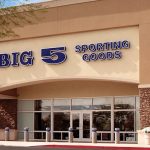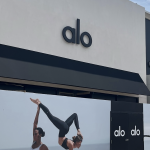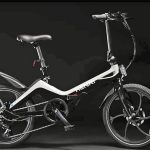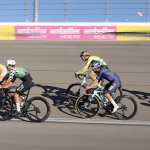Capping off a comeback year in 2010, Columbia Sportswear reported revenues surged 27.6% in the fourth quarter to $457.3 million. Earnings rose 13.4% to $26.2 million, or 77 cents a share for the quarter. The 19.2% full-year revenue gain to a record $1.48 billion followed three straight years of declines.
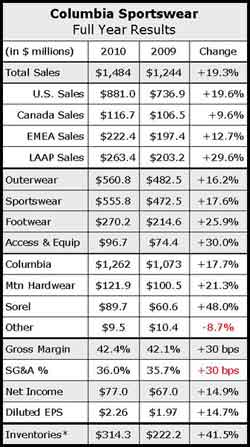
In the fourth quarter, double]digit growth was achieved in every product category, every region and in each of the companyfs three major brands.
The growth primarily reflected the previously-announced increase in Fall 2010 advance orders, combined with a timing shift of shipments due to delayed production. Also supporting the growth was earlier shipment of Spring 2011 advance orders to international distributors and U.S. wholesale customers, made possible by more timely Spring 2011 production. Stronger-than-expected global direct]to]consumer sales, partly benefiting from favorable fall weather, contributed over 40% of the growth in the quarter.
On a conference call with analysts, company President and CEO Tim Boyle attributed the gains to a renewed emphasis on product innovation, enhanced styling, improved retail presentation, and integrated marketing.
“I believe we have more innovative products across the brand portfolio than in at any time in the company's history,” said Boyle. “We intend to keep fueling our product engines and delivering innovations that benefit outdoor consumers and challenge our competitors to keep up.”
Sales of the Columbia brand grew 22.2% to $365.0 million in Q4, with a significant portion of the growth coming from its direct]to]consumer channel. Columbia officials indicated that Omni]Heat products produced “superior sell]through in every channel in key markets globally.” The Columbia brand also experienced strong double]digit growth in every product category and geographic region.
Sorel's sales jumped 74.1% to $50.5 million, including a four percentage point negative effect from changes in currency exchange rates.
The increase primarily reflected a strong increase in Fall 2010 advance orders, re-orders and direct]to]consumer sales. Growth was split equally between North America and the EMEA region.
Mountain Hardwear's sales advanced 37.7% to $39.8 million, including a one percentage point benefit from currency exchange rates. Mountain Hardwearfs growth came from all product categories and was concentrated in the U.S. and LAAP regions.
The fourth quarter comparison for both Sorel and Mountain Hardwear were impacted by a timing shift of shipments of Fall 2010 advance orders into the fourth quarter due to delayed production.
By category, Outerwear increased 20.1%, to $205.9 million on increased U.S. and LAAP Columbia]branded net sales. Sportswear sales increased 28.3% to $119.3 million on growth in the Columbia brand in the U.S., LAAP and EMEA regions. Footwear sales increased 44.7% to $102.6 million, on increased Sorel]branded sales in the EMEA, U.S. and Canada regions, and increased Columbia]branded sales in the U.S., EMEA and LAAP regions. Accessories & Equipment sales climbed 28.8% to $29.5 million on increased sales of the Columbia and Mountain Hardwear brands in the U.S.
By region, sales in the U.S. increased 20.0%, to $258.5 million, driven primarily by growth in direct]to]consumer and wholesale net sales of the Columbia, Sorel and Mountain Hardwear brands. U.S. direct]to]consumer net sales increased 48%, driven by both brick and mortar and ecommerce growth, and four more U.S.]based retail stores. Columbia had 49 stores at year-end compared to 45 stores at 2009 year-end. U.S. wholesale net sales contributed a 10% increase to total regional growth.
EMEA region sales grew 52.8% to $70.6 million, including a nine percentage point negative effect from changes in currency exchange rates. LAAP region sales increased 32.4% to $96.5 million, including a five percentage point currency benefit. Canada sales increased 33.8%, to $31.7 million, including a six percentage point currency benefit.
Gross margins eroded 40 basis points, to 41.7% of sales, primarily due to incremental costs to expedite production and delivery of Fall orders and a higher volume of close]out product sales, partially offset by increased direct]to]consumer sales at higher gross margins and by favorable foreign currency hedge rates.
Columbiafs fourth quarter SG&A expenses were reduced to 34.3% of sales from 35.2% as the sales leverage offset increased global personnel costs resulting from the internalization of its North American and European sales force, additional personnel to support growth initiatives, reinstatement of personnel and benefit programs curtailed or postponed in 2009, higher incentive compensation, incremental costs to support expanded direct]to]consumer businesses, and increased IT and advertising expense.
Inventories increased 41% to $314.3 million at Dec. 31 due to a larger volume of excess Fall 2010 season inventory designated for sale primarily through the company's outlet stores, as well as earlier receipt of Spring 2011 inventory compared to Spring 2010. The gain also reflects increased replenishment inventory and incremental inventory to support increased direct-to-consumer sales.
For 2011, Columbia expects low double-digit percentage increase in net sales, a slight expansion of gross margin and a slight reduction in SG&A expenses as a percentage of net sales. Noting that annual net sales are weighted more heavily toward the Fall/Winter season, Columbia expects a mid- to high-single-digit increase in sales in the first quarter, reflecting a 12% increase in Spring 2011 wholesale backlog and increased direct-to-consumer sales. That's expected to offset lower sales volumes of closeout products and the effect of the timing shift of shipments of U.S. wholesale and international distributors' Spring 2011 orders into Q4 2010.
First quarter operating margin is expected to approximate the 4.2% seen in Q1 2010, with a 175 basis point gross margin gain and increased licensing income offset by up to 250 basis points of SG&A expense expansion as a percentage of sales.









